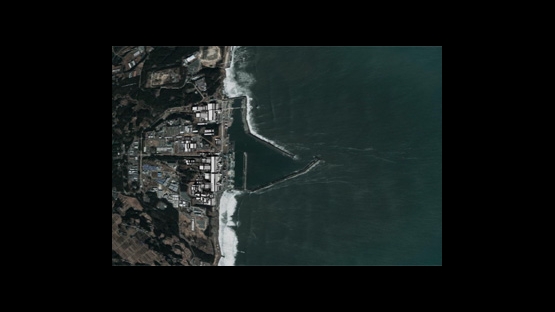The Government of Japan's Nuclear Regulation Authority (NRA) announced on 19 November 2013 the NRA's enhanced sea area monitoring measures in the area within a 30 kilometre radius from the Tokyo Electric Power Company's (TEPCO) Fukushima Daiichi Nuclear Power Station, as well as the initiation of a comparative analysis of the seawater monitoring data gathered by TEPCO and the NRA. The enhanced measures include additional monthly measurements (commencing 21 November 2013) and the establishment of seven additional sampling points, where radionuclides will be analysed, including Cs-134 (detection limit: 0.001Bq/L), Cs-137 (detection limit: 0.001Bq/L), Sr-90 (detection limit: 0.01Bq/L), H-3 (detection limit: 0.5Bq/L), K-40 (detection limit: 1Bq/L). The NRA had already been undertaking seawater monitoring beyond a 30 kilometre radius from TEPCO's Fukushima Daiichi Nuclear Power Station.
Following the 15 November 2013 contaminated water seepages reported earlier, the NRA provided on 19 November 2013 the results of TEPCO's daily seawater monitoring at a point near the Tank Area. Further information and a map can be found here.
In addition, TEPCO provided further details of the leakage.
The NRA reported that the concentrations of all radionuclides (i.e., Cs-134, Cs-137, total Beta and H-3) were relatively stable from 11 to 17 November at the sampling points near the Nuclear Power Station.
On 18 November 2013, the NRA provided the IAEA an update, noting that on 15 November 2013, Tokyo Electric Power Company (TEPCO) announced the results of an investigation that surveyed the lower portion of the reactor Unit 1 vent pipes at TEPCO's Fukushima Daiichi Nuclear Power Station (NPS).
At Units 1, 2 and 3 at the NPS, it had been assumed that the cooling water, injected into the reactors, was leaking from the primary containment vessels to the reactor buildings, but the specific location of the leakage had not been identified. In response, investigations have been conducted to identify the cause of the leakage. TEPCO has identified precise locations of leakages of contaminated water from the primary containment vessel of Unit 1.
In its 18 November 2013 update, the Government of Japan referred to the discovery as "a significant step forward towards decommissioning, since the cause of the leakage of the contaminated water was confirmed." The Government of Japan will further investigate the situation in detail and expects that the decommissioning process would be accelerated. The foregoing information is posted on the TEPCO website.
Further information was also provided on the robotic boat technology and measurement methods used to investigate leakage at Unit 1:
- Background information
- Results from the first day of investigation
- Results from the second day of investigation
- Higher resolution images
The Government of Japan also informed the IAEA on 18 November 2013 that TEPCO was scheduled to begin removing fuel from the Unit 4 reactor that day and moving it to the Common Spent Fuel Pool. In addition, the actions, which are to be taken by the Nuclear Regulation Authority of Japan (NRA) with regard to the fuel removal, are described on the following NRA webpages:
TEPCO provided further detailed information about the fuel removal procedure, as well as a summary of the safety measures currently in effect for the Spent Fuel Pool removal process at Unit 4.


